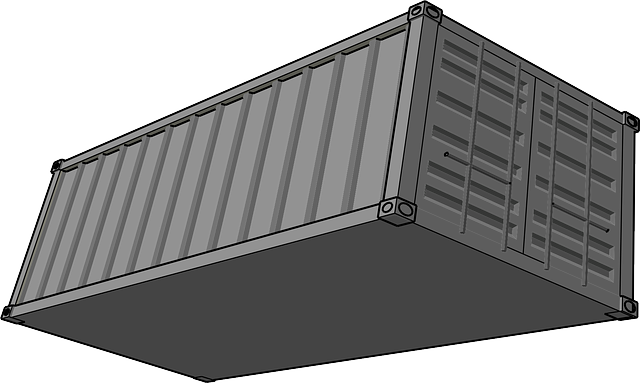Cargo insurance is a critical safety net for businesses transporting goods, offering financial protection against transit risks. Physical damage insurance, a key component, provides comprehensive coverage for losses due to accidents, natural disasters, fire, or theft, ensuring the preservation of shipment value and offering peace of mind in an unpredictable logistics sector. This tailored insurance allows businesses to select coverage levels based on cargo value and nature, from extensive protection for high-value goods to simpler policies for less valuable shipments, fostering smoother operations and maintaining supply chain confidence.
In today’s global logistics network, safeguarding freight and goods during transit is paramount. This article delves into the essential role of cargo insurance in protecting shippers and carriers from unforeseen risks. We explore key components like physical damage insurance, which shields against perils such as accidents, natural disasters, and theft, ensuring the intact delivery of your valuable cargo. By understanding coverage options tailored to specific freight needs, businesses can mitigate potential losses and navigate a complex shipping landscape with confidence.
Understanding Cargo Insurance: A Necessary Shield for Freight Security

Cargo insurance, a crucial component in the logistics industry, serves as a protective shield for freight and goods during transit. It provides financial coverage against potential risks and losses that may occur during the transportation process, ensuring peace of mind for both shippers and carriers. This type of insurance is essential as it offers compensation for physical damage or loss of cargo, which can result from various unforeseen circumstances such as accidents, natural disasters, or theft.
Understanding physical damage insurance is key to recognizing its value. It goes beyond standard coverage by specifically addressing the financial implications of physical harm to goods during transit. This includes protection against costs associated with repairs, replacements, and even legal fees in case of disputes related to damaged cargo. By having this insurance in place, businesses can mitigate significant financial losses that may arise from unexpected events, thereby securing their investment in the freight they transport.
The Role of Physical Damage Insurance in Protecting Goods During Transit

Physical damage insurance plays a pivotal role in safeguarding freight and goods during transit, mitigating risks that can lead to significant financial losses for businesses. This type of insurance covers losses or damages incurred by the physical goods while they are in transit, whether by land, sea, or air. It includes protection against perils like accidents, natural disasters, fire, and theft, ensuring that the value of the shipment is preserved regardless of unforeseen circumstances.
By providing comprehensive coverage for physical damage, this insurance acts as a shield against potential financial disasters. Businesses can rest assured knowing their goods are protected, enabling them to focus on growth and expansion without constant worry about unexpected losses. This peace of mind is invaluable in today’s fast-paced logistics industry where time and efficiency are paramount.
Common Risks and Perils: Why Insurance is Invaluable for Shippers and Carriers

In the dynamic world of freight transportation, shippers and carriers face a multitude of risks and perils that can significantly impact their operations. From natural disasters to theft, accidents, and damage during transit, every stage of the supply chain presents unique challenges. Physical damage insurance stands as a cornerstone in mitigating these risks, offering vital protection for goods worth millions. Without adequate coverage, even minor incidents can result in substantial financial losses, disrupting business operations and damaging reputations.
Consider a scenario where a shipment of delicate electronics experiences water damage during a storm or an accident leading to the total loss of cargo. Physical damage insurance covers such unforeseen events, ensuring that carriers are not left burdened with the sole responsibility of compensation. By securing this type of insurance, shippers can have peace of mind, knowing their goods are safeguarded against potential hazards, allowing for smoother business operations and fostering confidence in the supply chain.
Navigating Coverage Options: Customizing Policies to Suit Specific Freight Needs

Navigating the world of cargo insurance can be a complex task, especially when it comes to tailoring policies to specific freight requirements. Each shipment has unique characteristics, and insurance providers offer a range of coverage options to cater to diverse needs. For instance, physical damage insurance is a crucial component for protecting goods during transit, covering perils like accidents, natural disasters, and handling errors that could result in loss or damage. This type of insurance ensures that, should something go awry, the freight is compensated for its value.
Customizing policies allows businesses to select specific coverage levels based on their cargo’s nature and value. For high-value goods, comprehensive coverage might be necessary, including additional protections against theft, hijacking, or political risks. Conversely, less valuable shipments may require simpler policies focusing on core physical damage protection. Such customization ensures that the insurance policy aligns perfectly with the freight’s specific requirements, offering peace of mind to both senders and receivers.
Cargo insurance, particularly physical damage insurance, plays a pivotal role in safeguarding freight and goods during transit. By understanding common risks and perils, shippers and carriers can tailor coverage options that meet their specific needs. Navigating the available policies enables businesses to mitigate potential losses and ensure the secure delivery of their valuable cargo, fostering trust and confidence in the supply chain.
